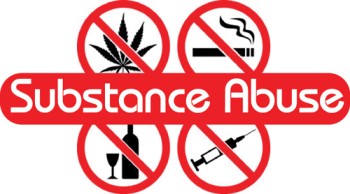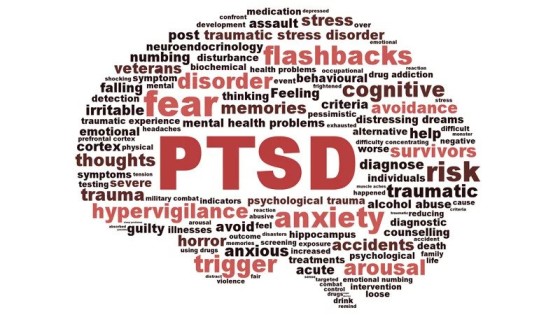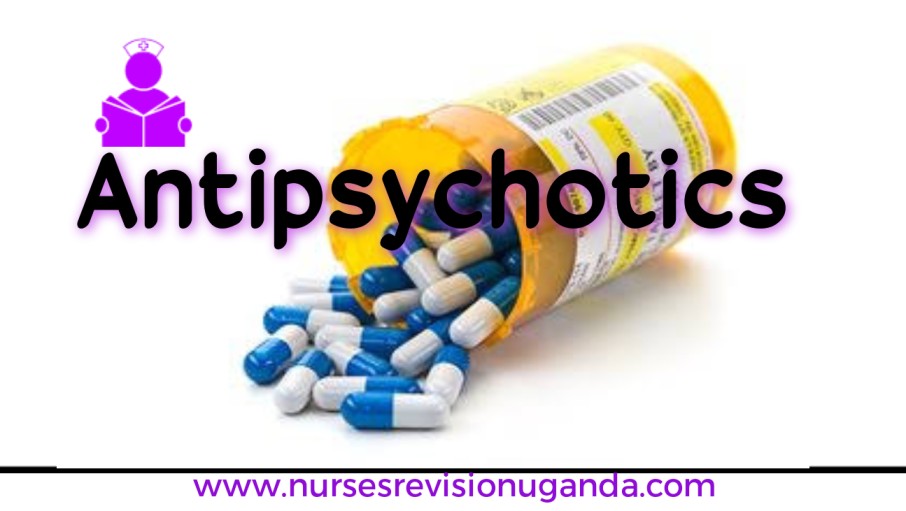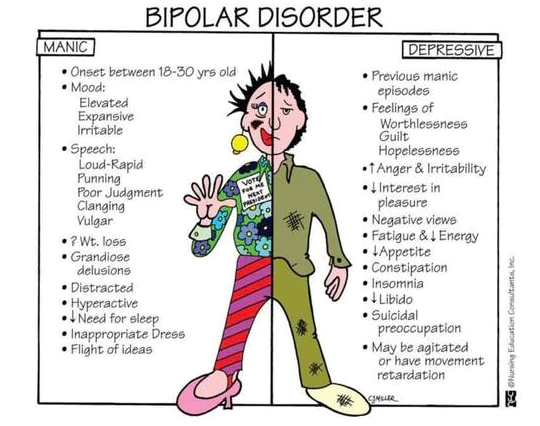SEIZURE DISORDERS
SEIZURE DISORDERS.
Seizure is defined as when there is a non-recurrent abnormal electrical activity in the brain or central nervous system resulting in abnormal motor, sensory or psychomotor experiences.
A seizure is an abnormal, unregulated electrical discharge that occurs within the brain’s cortical gray matter and gradually interrupts normal brain function.
Therefore when a person has recurrent, intermittent tendency to develop a seizure, we say he is having epilepsy.
- A seizure causes altered awareness, abnormal sensations, focal involuntary movements, or convulsions (widespread violent involuntary contraction of voluntary muscles).
- About 2% of adults have a seizure at some time during their life. Two thirds of these people never have another one.
- Seizure disorders are either epileptic or non-epileptic.
Epileptic seizures:
Epilepsy is a neurological disorder in which the brain activity becomes abnormal, causing seizures or periods of unusual behaviour, sensations, and sometimes loss of awareness.
Epilepsy (also called epileptic seizure disorder) is a chronic brain disorder characterized by recurrent seizures that are unprovoked (ie, not related to reversible stressors) and that occur > 24 h apart.
A single seizure is not considered an epileptic seizure. Epilepsy is often idiopathic, but various brain disorders, such as malformations, strokes, and tumors, can cause symptomatic epilepsy.
Symptomatic epilepsy is epilepsy due to a known cause (eg, brain tumor, stroke). The seizures it causes are called symptomatic epileptic seizures. Such seizures are most common among neonates (see Neonatal Seizure Disorders) and the elderly.
Cryptogenic epilepsy is epilepsy assumed to be due to a specific cause, but whose specific cause is currently unknown.
Non epileptic seizures.
These are provoked by a temporary disorder or stressor (eg, metabolic disorders, CNS infections, cardiovascular disorders, drug toxicity or withdrawal, psychogenic disorders). In children, fever can provoke a seizure (febrile seizures).
Psychogenic nonepileptic seizures (pseudoseizures) are symptoms that simulate seizures in patients with psychiatric disorders but that do not involve an abnormal electrical discharge in the brain.

Etiology of Seizure Disorders:
I. Age-Specific Causes:
A. Before Age 2:
- Fever: Seizures in young children often result from fevers, a common occurrence in this age group.
- Birth or Developmental Defects: Structural abnormalities present at birth or developmental issues contribute to seizures.
- Birth Injuries: Trauma during the birthing process can lead to seizure disorders in infants.
- Metabolic Disorders: Disorders affecting metabolism may manifest as seizures in early childhood.
B. Ages 2 to 14:
- Idiopathic Seizure Disorders: Seizures with no identifiable cause, often occurring during childhood, fall under idiopathic seizure disorders.
C. Adults:
- Cerebral Trauma: Traumatic brain injuries, often resulting from accidents, can trigger seizures in adults.
- Alcohol Withdrawal: Abrupt cessation of alcohol intake can lead to seizures as the body adjusts.
- Tumors: The presence of tumors in the brain may cause seizures, especially in adults.
- Strokes: Disruption of blood flow to the brain, resulting in a stroke, is a significant cause of seizures in adults.
- Unknown Cause (50%): In many cases, the cause of seizures in adults remains unidentified, highlighting the complexity of diagnosis.
D. The Elderly:
- Tumors: Tumors in the brain become a more prominent cause of seizures in the elderly.
- Strokes: Similar to adults, strokes are a common contributor to seizures in the elderly.
E. Reflex Epilepsy:
- Seizures are predictably triggered by external stimuli, such as lights, sounds, or touch, in rare cases known as reflex epilepsy.
F. Cryptogenic and Refractory Epilepsy:
- Anti-NMDA receptor encephalitis, particularly in young women, is identified as a rare cause, leading to psychiatric symptoms and movement disorders. Ovarian teratoma is associated with this condition.
II. General Causes of Seizures Irrespective of Age:
- Autoimmune Disorders: Cerebral vasculitis, anti-NMDA receptor encephalitis, and multiple sclerosis may lead to seizures, although rarely.
- Cerebral Edema: Swelling of the brain tissue, known as cerebral edema, can trigger seizures.
- Eclampsia, Hypertensive Encephalopathy: Conditions related to high blood pressure during pregnancy can result in seizures.
- Cerebral Ischemia or Hypoxia: Insufficient blood flow or oxygen to the brain may cause seizures.
- Cardiac Issues, Carbon Monoxide Toxicity, and Stroke: Conditions affecting the heart, carbon monoxide exposure, drowning, suffocation, and strokes are potential triggers.
- Head Trauma: Both birth-related injuries and traumatic injuries during life can contribute to seizure disorders.
- CNS Infections: AIDS, brain abscess, malaria, meningitis, neurocysticercosis, neurosyphilis, rabies, tetanus, toxoplasmosis, and viral encephalitis can lead to seizures.
- Congenital or Developmental Abnormalities: Structural abnormalities present from birth or those developing during early life contribute to seizures.
- Drugs and Toxins: Various substances, including drugs and toxins like camphor, ciprofloxacin, cocaine, and others, may induce seizures.
- Expanding Intracranial Lesions: Hemorrhage, hydrocephalus, and tumors contribute to seizures by causing pressure on the brain.
- Hyperpyrexia: Extremely high fever, associated with drug toxicity or heatstroke, can lead to seizures.
- Metabolic Disturbances: Hypocalcemia (linked to hypoparathyroidism), hypoglycemia, and hyponatremia.
- Less Common Causes: Aminoacidurias, hepatic or uremic encephalopathy, hyperglycemia, hypomagnesemia, hypernatremia.
- Neonatal Cause: Vitamin B6 (pyridoxine) deficiency in neonates.
- Withdrawal Syndromes: Alcohol, anesthetics, barbiturates, benzodiazepines—withdrawal from these substances can induce seizures.

Classification of Seizures
Seizures are classified as generalized or partial.

1. Partial seizures/focal seizures.
In partial seizures, the excess neuronal discharge occurs in one cerebral cortex, and most often results from structural abnormalities.
Partial seizures may be;
- Simple : Focal seizures without impairment of consciousness or awareness.
- Complex : Focal seizures with impairment of consciousness or awareness.
Partial seizures may evolve into a generalized seizure (called secondary generalization), which causes loss of consciousness. Secondary generalization occurs when a partial seizure spreads and activates the entire cerebrum bilaterally. Activation may occur so rapidly that the initial partial seizure is not clinically apparent or is very brief.
Symptoms and Signs of partial seizures.
The manifestation depends on the part of the brain that is affected;
A. Simple Partial Seizures:
- Aura: Simple partial seizures may begin with auras, such as motor activity, sensory sensations, autonomic changes, or psychic experiences. Auras are simple partial seizures that begin focally. Auras may consist of motor activity or sensory, autonomic, or psychic sensations (eg, paresthesias, a rising epigastric sensation, abnormal smells, a sensation of fear, a déjà vu sensation).
- Most seizures end spontaneously in 1 to 2 min.
- Postictal State: Following generalized seizures, a postictal state occurs, characterized by deep sleep, headache, confusion, and muscle soreness; this state lasts from minutes to hours.
- Most patients appear neurologically normal between seizures, although high doses of the drugs used to treat seizure disorders, particularly anticonvulsants, can reduce alertness.
B. Jacksonian Seizures:
- In Jacksonian seizures, focal motor symptoms begin in one hand and then march up the arm (Jacksonian march). Other focal seizures affect the face first, and then spread to an arm and sometimes a leg. Some partial motor seizures begin with an arm raising and the head turning toward the raised arm (called fencing posture).
C. Complex Partial Seizures:
Complex partial seizures are often preceded by an aura. During the seizure, patients may stare. Consciousness is impaired, but patients have some awareness of the environment (eg, they purposefully withdraw from noxious stimuli). The following may also occur:
- Oral automatisms (involuntary chewing or lip smacking)
- Limb automatisms (eg, automatic purposeless movements of the hands)
- Utterance of unintelligible sounds without understanding what they say
- Resistance to assistance
- Tonic or dystonic posturing of the extremity contralateral to the seizure focus
- Head and eye deviation, usually in a direction contralateral to the seizure focus
- Bicycling or pedaling movements of the legs if the seizure emanates from the medial frontal or orbitofrontal head regions
- Motor symptoms subside after 1 to 2 min, but confusion and disorientation may continue for another 1 or 2 min.
- Postictal amnesia is common.
- Patients may lash out if restrained during the seizure or while recovering consciousness if the seizure generalizes. However, unprovoked aggressive behavior is unusual.
- Left temporal lobe seizures may cause verbal memory abnormalities; right temporal lobe seizures may cause visual spatial memory abnormalities.

Generalized seizures
In generalized seizures, abnormal electrical discharge diffusely involves the entire cortex of both hemispheres from the onset, and consciousness is usually lost. Generalized seizures result mostly from metabolic disorders and sometimes from genetic disorders.
Generalized seizures include the following:
1. Infantile spasms: Characterized by sudden flexion and adduction of the arms and forward flexion of the trunk. Seizures last a few seconds and recur many times a day. They occur only in the first 5 years of life, then are replaced by other types of seizures. Developmental defects are usually present.
2. Typical absence seizures (formerly called petit mal seizures): Consist of a 10- to 30-second loss of consciousness with eyelid fluttering; axial muscle tone may or may not be lost. Patients do not fall or convulse; they abruptly stop activity, then just as abruptly resume it, with no postictal symptoms or knowledge that a seizure has occurred. Absence seizures are genetic and occur predominantly in children. Without treatment, such seizures are likely to occur many times a day. Seizures often occur when patients are sitting quietly, can be precipitated by hyperventilation, and rarely occur during exercise. Neurologic and cognitive examination results are usually normal.
3. Atypical absence seizures: Usually occur as part of the Lennox-Gastaut syndrome, a severe form of epilepsy that begins before age 4 years. They differ from typical absence seizures in the following ways:
- They last longer.
- Jerking or automatic movements are more pronounced.
- Loss of awareness is less complete.
- Many patients have a history of damage to the nervous system, developmental delay, abnormal neurologic examination results, and other types of seizures. Atypical absence seizures usually continue into adulthood.
4. Atonic seizures: Occur most often in children, usually as part of Lennox-Gastaut syndrome. Atonic seizures are characterized by a brief, complete loss of muscle tone and consciousness. Children fall or pitch to the ground, risking trauma, particularly head injury.
5. Tonic seizures: Occur most often during sleep, usually in children. The cause is usually the Lennox-Gastaut syndrome. Tonic (sustained) contraction of axial muscles may begin abruptly or gradually, then spread to the proximal muscles of the limbs. Tonic seizures usually last 10 to 15 seconds. In longer tonic seizures, a few rapid clonic jerks may occur as the tonic phase ends.
6. Tonic-clonic seizures: Can be primarily generalized or secondarily generalized.
- Primarily generalized seizures typically begin with an outcry, followed by a loss of consciousness, falling, tonic contraction, and then clonic (rapidly alternating contraction and relaxation) motion of muscles of the extremities, trunk, and head. Urinary and fecal incontinence, tongue biting, and frothing at the mouth sometimes occur. Seizures usually last 1 to 2 minutes, and there is no aura.
- Secondarily generalized tonic-clonic seizures begin with a simple partial or complex partial seizure and then progress to resemble other generalized seizures.
7. Myoclonic seizures: Brief, lightning-like jerks of a limb, several limbs, or the trunk. They may be repetitive, leading to a tonic-clonic seizure. The jerks may be bilateral or unilateral. Unlike other seizures with bilateral motor movements, consciousness is not lost unless the myoclonic seizure progresses into a generalized tonic-clonic seizure.
8. Juvenile myoclonic epilepsy: An epilepsy syndrome characterized by myoclonic, tonic-clonic, and absence seizures. It typically appears during adolescence. Seizures begin with a few bilateral, synchronous myoclonic jerks, followed in 90% of cases by generalized tonic-clonic seizures. They often occur when patients awaken in the morning, especially after sleep deprivation or alcohol use. Absence seizures may occur in one-third of patients.
GENERAL MANAGEMENT OF SEIZURE DISORDERS.
During the attack; (first aid)
- Ensure Safety:
Observe warning signs.
Lay the individual on a flat surface.
Ensure the surrounding environment is safe.
- Remove Hazards: Clear the area of dangerous objects like sticks or stones.
- Do Not Restrain: Avoid restraining the person during the seizure.
- Protect Airways: Do not insert anything into the mouth.
- Note Duration: Record the length of the seizure for medical evaluation.
- Post-Seizure:
Allow the person to rest.
Provide refreshments if needed.
Drug Management:
Anticonvulsant Medications:
- Use medications such as diazepam, phenytoin, sodium valproate, among others.
- Follow prescribed dosage and administration schedules.
Severe Epileptic Attack (Pediatric/Medical/Psychiatric Emergency):
- Anticonvulsant Administration: Administer appropriate anticonvulsants promptly.
- Cardio-Respiratory Support: Provide immediate support for cardiac and respiratory functions.
- Prevent Falling: Ensure a safe environment to prevent injuries during seizures.
- Intravenous Fluids: Administer intravenous fluids to maintain hydration.
- Hypoglycemia Prevention: Monitor and maintain blood glucose levels to prevent hypoglycemia.
Long-Term Management:
- Individualized Treatment Plans: Develop a personalized treatment plan in collaboration with healthcare professionals.
- Regular Medication Adherence: Ensure consistent adherence to prescribed anticonvulsant medications.
- Lifestyle Modifications: Encourage a healthy lifestyle with regular sleep patterns, stress management, and a balanced diet.
- Trigger Identification: Identify and manage potential triggers, such as stress or lack of sleep.
- Seizure Action Plan: Establish a comprehensive seizure action plan in coordination with healthcare providers.
- Regular Medical Follow-Up: Schedule routine medical follow-ups to monitor progress and adjust treatment as needed.
- Educational Support: Provide educational resources and support for individuals and their families to understand and cope with epilepsy.
- Psychosocial Interventions: Integrate psychosocial interventions to address emotional and psychological aspects of living with epilepsy.
- Emergency Medication Access: Ensure accessibility to emergency medications in case of prolonged seizures.
- Multidisciplinary Approach: Involve a multidisciplinary team, including neurologists, psychologists, and social workers, for holistic care.
Nursing Interventions for Seizure Disorder
Prevent Trauma/Injury:
- Teach caregivers to recognize warning signs and manage patients during and after seizures.
- Advise against using breakable thermometers; opt for tympanic thermometers when necessary.
- Maintain strict bedrest during prodromal signs or auras.
- Turn the head to the side, suction the airway as needed, and provide support during seizures.
- Avoid restraint attempts; monitor and document antiepileptic drug (AED) levels, side effects, and seizure frequency.
Promote Airway Clearance:
- Keep the patient in a lying position on a flat surface.
- Turn the head to the side during seizure activity.
- Loosen clothing around the neck, chest, and abdomen.
- Perform suctioning as needed.
- Supervise supplemental oxygen or bag ventilation postictally.
Improve Self-Esteem:
- Assess individual situations contributing to low self-esteem.
- Avoid over-protectiveness; encourage independence.
- Support and monitor activities; consider the attitudes and capabilities of significant others.
- Help individuals understand that their feelings are normal, discouraging guilt and blame.
Enforce Education About the Disease:
- Review the pathology and prognosis of the condition.
- Emphasize the lifelong need for treatments.
- Identify specific trigger factors (flashing lights, hyperventilation, loud noises, video games, TV).
- Stress the importance of good oral hygiene and regular dental care.
- Educate on the medication regimen, emphasizing adherence and the significance of not discontinuing therapy without physician supervision.
- Provide clear instructions for missed doses.
Seizure Documentation:
- Maintain detailed records of seizure occurrences, duration, and characteristics.
- Document any changes in the patient’s behavior or aura.
Family Education and Support:
- Educate family members on seizure first aid and safety measures.
- Offer emotional support and counseling to both the patient and family members.
Regular Neurological Assessments:
- Perform routine neurological assessments to monitor changes in seizure patterns or neurological status.
Medication Administration:
- Administer antiepileptic medications as prescribed, ensuring proper dosage and adherence.
Lifestyle Modifications:
- Collaborate with the patient to identify and manage lifestyle factors that may trigger seizures.
- Encourage the establishment of consistent sleep patterns and stress reduction techniques.
Emergency Preparedness:
- Ensure caregivers are equipped to handle emergencies, providing guidance on when to seek medical attention.
Social Integration:
- Assist in facilitating social integration for the patient, addressing any potential stigma or discrimination.
FEBRILE CONVULSIONS
A febrile seizure, also known as a fever fit, is a seizure associated with a high body temperature without any serious underlying health issue.
Primarily occurs in children aged 6 months to 5 years. Usually, seizures last less than five minutes, and the child returns to normal within sixty minutes.
Causes:
- Familial predisposition to febrile seizures.
- Linked to fevers exceeding 38 °C (100.4 °F), often triggered by viral illnesses. The risk increases with the height of the temperature.
- Vaccines, although with a small associated risk, may contribute, including measles/mumps/rubella/varicella, diphtheria/tetanus/acellular pertussis/polio/Haemophilus influenzae type b, and others.
Types:
Simple Febrile Seizures:
- Short duration (<15 minutes), no focal features.
- Usually, a single tonic-clonic seizure in a 24-hour period.
Complex Febrile Seizures:
- Last longer than 15 minutes or occur multiple times within 24 hours.
- May have focal features.
Febrile Status Epilepticus:
- Lasts for more than 30 minutes.
- Occurs in up to 5% of febrile seizure cases.
Diagnosis:
- Generally clinical, eliminating serious causes such as meningitis and encephalitis.
- Blood tests, brain imaging, and EEG are typically not required.
- Verify absence of brain infection, metabolic issues, and prior seizures unrelated to fever.
Management:
First Aid During Seizure:
- Ensure a safe environment.
- Remove dangerous objects.
- Do not restrain the child.
- Note seizure duration.
Medical Intervention:
- No routine use of anti-seizure or anti-fever medications.
- Benzodiazepines (e.g., lorazepam) for seizures lasting over five minutes.
Treatment:
- Maintain a calm environment.
- Note seizure start time; call an ambulance if >5 minutes.
- Place the child on a protected surface.
- Do not restrain; position on the side to prevent choking.
- Seek immediate medical attention, especially if the first seizure or concerning symptoms persist.
- Intravenous lorazepam for prolonged seizures.
Prevention:
- Proper fever management in children.
- Avoid exposing babies to excessive heat.









